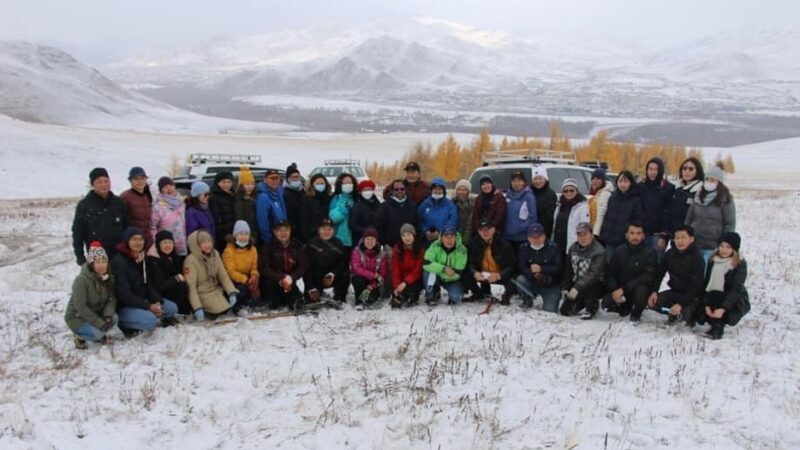UN-Habitat pictured with community members during winter in the Mongolia project area that includes tree planting activities (Photo: UN)
Mongolia flood defence project shows the way for urban adaptation
The project incorporates infrastructural upgrades with the formation of community action groups to improve the capital’s flood resilience
A project in Mongolia, which incorporates a wide range of initiatives and aims to build the resilience of high-risk communities, is directly confronting the burden of urban climate impacts.
The country has seen warming of over 2°C since recordings started in 1940 and now experiences climate related hazards such as extreme rainfall, strong winds, and snowstorms, which are only intensifying.
Most vulnerable to these changes are traditional settlements, known as ger districts, which are often established on low land and mountain slopes, susceptible to run-off and consequently flooding.
Seven ger districts in Ulaanbaatar, Mongolia’s capital, were chosen for the adaptation project, and work by UN-Habitat to improve the adaptive infrastructure of the communities to flooding began in 2019.
Made possible by a USD 4.5 million grant by the Adaptation Fund, the project has a multifaceted and participatory approach to maximise adaptive capacities across district and community levels.
“By focusing on flooding, the project aims to increase the resilience of the ger areas through the construction of physical flood infrastructure and improved sanitation services; improvement of the knowledge on flood hazard and risk exposure and vulnerability for the ger areas; and improvement of the resilience and adaptive capacity of target communities,” Shagdarsuren says.
As well as tangible developments, like improved flood services, the project brings together action and training groups, 10 to 20 households at a time, where community members learn and share in an environment that encourages awareness raising, communication, and a friendly community spirit.
Now, 89 groups, half of which are led by women, have been formed, and are creating and implementing local action plans. Five flood protection and drainage facilities have also been constructed.
Over 27,000 people have so far benefited from increased flood protection and 6,000 have better sanitation infrastructure, while a further 1 million people across the capital are benefiting indirectly.
Continue reading the original article on Climate Home News.


